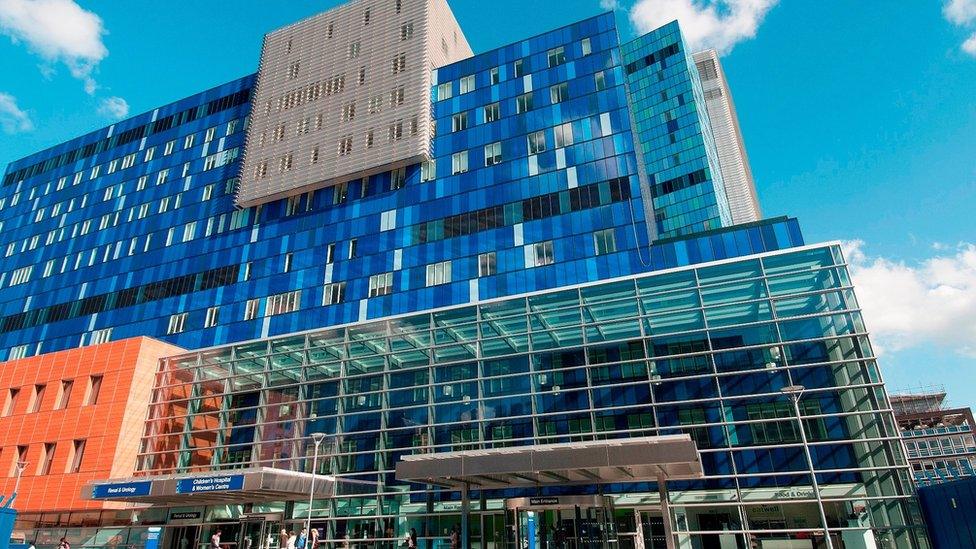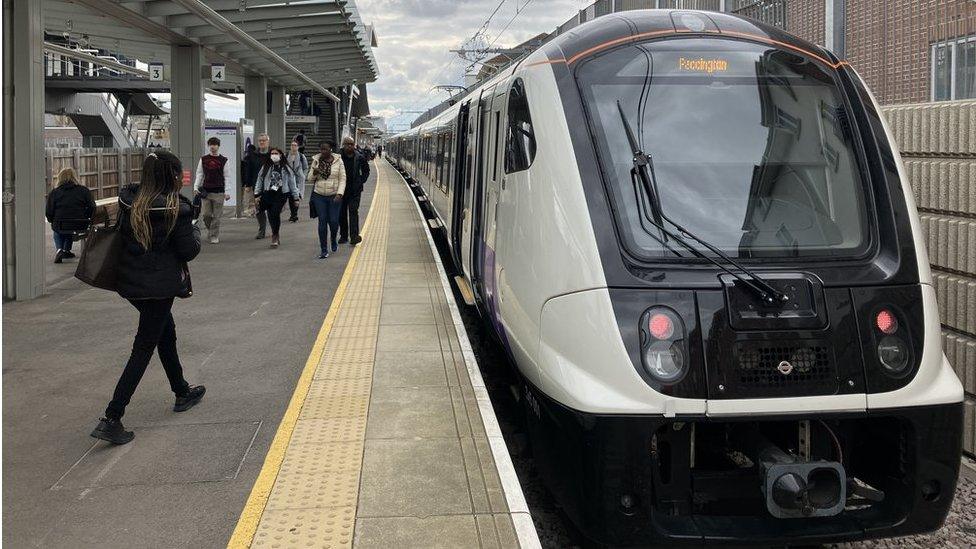Royal London Hospital blames Elizabeth line for patient influx
- Published

The Royal London Hospital is close to the new Elizabeth line station at Whitechapel
An east London hospital has said the Elizabeth line puts increased pressure on its emergency services.
A growing number of patients are coming from neighbouring boroughs, leading to a drop in its performance, the Royal London Hospital said.
The number of people being seen for non-urgent treatment has increased by 80% compared to pre-pandemic levels.
In 2019, its A&E saw 75% of patients within four hours compared with 58% so far in 2023.
Tom Cornwell, the director of operations, said the new Whitechapel station was a "massive factor".
Its urgent treatment centres (UTC) for non-life threatening treatment saw 98% of patients inside four hours in April 2019.
That dropped to 77% as of August 2023, it was revealed during a meeting with Tower Hamlets Council's health and adults scrutiny sub-committee on Tuesday.
A recent Transport for London report showed 738,000 journeys were recorded on the Elizabeth line on 28 September, the highest number the line has experienced.
In May, it celebrated its first anniversary with the introduction of a full peak timetable. The frequency of trains each hour between Paddington and Whitechapel was upped from 22 to 24, with 16 trains an hour running off-peak with the line's overall capacity increasing by about 10%.
When the meeting opened up for questions, Labour councillor Amina Ali asked Royal London staff whether they were in contact with nearby east London hospitals about the "sudden surge" in patients.
Kathriona Davison, chief operating officer at the Royal London, said Homerton, Newham and Whipps Cross hospitals had not seen a reduction in their activity but that "it just happens to come to us as a result of the Elizabeth line and that's the indication from the data that we have at the moment".
Ms Davison explained: "It's very difficult to stop people coming to us by the Elizabeth line," adding that the number of patients they were seeing also probably reflected how they perceived the hospital's UTC and A&E departments.
"We are working on it and it's part of the plans on how we address some of those increased demands."
A spokesperson for Barts Health NHS Trust said: "Like many NHS hospitals, The Royal London is experiencing a high demand for services with the number of patients treated increasing considerably and bed occupancy almost doubling since 2019.
"We are committed to meeting the national target of 76%, and we are consistently meeting the 4 hour target for children. To reduce the time our patients are waiting in A&E we are working with our partners in the Urgent Treatment Centre."

Listen to the best of BBC Radio London on Sounds and follow BBC London on Facebook, external, X, external and Instagram, external. Send your story ideas to hello.bbclondon@bbc.co.uk, external
- Published9 September 2023

- Published25 January 2023
- Published24 May 2022
